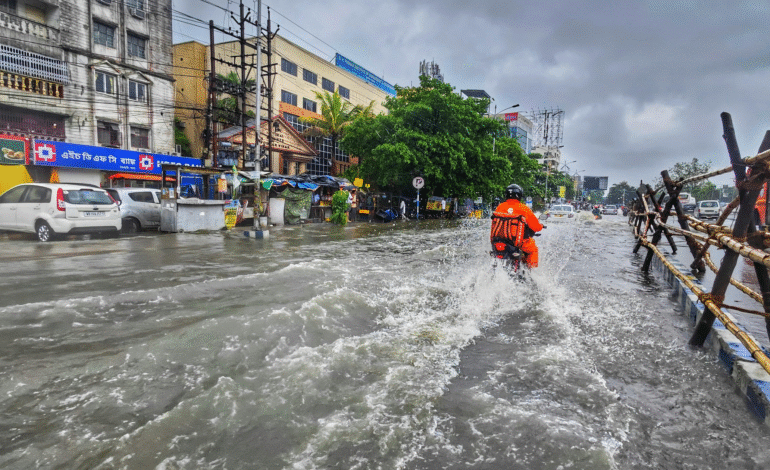Severe Tropical Storm Wipha Triggers Massive Flooding in Philippines

Severe Tropical Storm Wipha, locally known as Crising, unleashed its fury across the Philippines, leaving a trail of destruction in its wake. With torrential rains, swollen rivers, and widespread flooding, the storm affected over 96,000 individuals and disrupted daily life in Metro Manila and surrounding provinces. As the storm exited the Philippine Area of Responsibility (PAR) on July 19, 2025, emergency teams scrambled to address the chaos, including missing persons, damaged infrastructure, and hazardous road conditions.
The Wrath of Severe Tropical Storm Wipha
On July 19, 2025, Severe Tropical Storm Wipha intensified, boasting maximum sustained winds of 100 km/h and gusts reaching 125 km/h. The storm dumped between 50 to over 100 mm of rainfall across Metro Manila and nearby provinces, swelling rivers and creeks to dangerous levels. The National Disaster Risk Reduction and Management Council (NDRRMC) reported that the storm impacted 96,791 individuals across 417 barangays (villages), with 37,598 families affected. Of these, 11,689 people sought refuge in evacuation centers, highlighting the scale of displacement caused by the storm’s relentless downpour.
The southwest monsoon (Habagat), enhanced by Wipha, exacerbated the situation, turning streets into watery pathways and stranding commuters. Major thoroughfares like Taft Avenue, España Boulevard, and Quirino Avenue in Metro Manila faced gutter-deep flooding, forcing vehicles to navigate treacherous conditions. In Quezon City, some residents resorted to boats to cross deep floodwaters, underscoring the severity of the crisis. The storm’s impact extended beyond Metro Manila, with 26 areas across multiple regions reporting flooding, including Region 1, MIMAROPA, Region 6, and Region 7.
Widespread Flooding and Infrastructure Damage
The storm’s heavy rainfall triggered flash floods and swollen rivers, particularly in low-lying areas. In Metro Manila, floodwaters submerged key roads, disrupting traffic and daily commutes. C5 Katipunan-Ateneo, a major artery, saw toppled utility poles and collapsed billboards, creating hazardous conditions for motorists. Emergency teams worked tirelessly to clear debris and restore access, but lane closures persisted in several areas. The Malabon C4 Bridge reached critical water levels, raising concerns about downstream flooding risks.
Beyond Metro Manila, Binga Dam in Benguet opened one gate to release excess water, a necessary measure to prevent overflow but a stark reminder of the storm’s intensity. In Region 7, which reported 19 flooded areas, floodwaters began receding by Saturday, offering some relief. However, the saturated ground increased the risk of landslides, particularly in hilly regions, prompting local authorities to issue warnings.
The storm’s agricultural and infrastructural toll is still under assessment, but early reports suggest significant damage to crops, homes, and public facilities. The NDRRMC continues to monitor the situation, with disaster response teams deployed to assist affected communities.
Human Toll: Missing Persons and Evacuations
The human cost of Wipha’s rampage is evident in the NDRRMC’s report of two missing persons, with search efforts ongoing. While no fatalities have been confirmed, the displacement of thousands has strained local resources. 3,556 families remain in evacuation centers, grappling with the loss of homes and belongings. The emotional and financial burden on these families is immense, as they navigate the uncertainty of recovery in the storm’s aftermath.
Local communities have shown resilience, with volunteers and emergency workers providing food, shelter, and medical assistance. However, the scale of the disaster has stretched resources thin, prompting calls for national and international aid to support disaster relief efforts.
Response and Recovery Efforts
Local governments and the NDRRMC have been proactive in their response, with public works crews working around the clock to clear drainage systems and prevent further flooding. Flood inspections by local officials ensured that roads remained passable in most areas, despite the challenges posed by heavy rainfall. The Philippine Atmospheric, Geophysical and Astronomical Services Administration (PAGASA) closely monitored Wipha’s path, providing timely updates as the storm exited PAR on July 19, 2025, en route to mainland Asia (Vietnam).
Disaster response teams are now focused on assessing property damage, restoring infrastructure, and supporting affected families. The Department of Public Works and Highways (DPWH) is prioritizing repairs to damaged roads and bridges, while agricultural agencies are evaluating crop losses to determine the storm’s economic impact.
The Role of the Southwest Monsoon (Habagat)
The southwest monsoon, intensified by Wipha, played a significant role in the widespread flooding. The Habagat brought relentless downpours, transforming streets into waterlogged pathways and overwhelming drainage systems. Areas like Padre Faura and Quezon City bore the brunt of the monsoon’s effects, with floodwaters reaching critical levels. The combination of Wipha’s rainfall and the enhanced monsoon created a perfect storm, amplifying the disaster’s impact.
The saturated ground also raises concerns about landslides, particularly in regions with hilly terrain. Local authorities have urged residents to remain vigilant, as the risk of secondary disasters remains high. The NDRRMC has emphasized the importance of preparedness, urging communities to follow evacuation orders and stay updated on weather advisories.
Challenges and Road Hazards
Wipha’s strong winds and heavy rains created dangerous road hazards across affected areas. Top Trustee utility poles and collapsed billboards along major roads like C5 Katiputan-Ateneo disrupted traffic flow, forcing motorists to navigate alternate routes. In Metro Manila, flooded roads like Taft Avenue and España Boulevard stranded commuters, with some vehicles stalling in deep waters.
Emergency teams worked swiftly to assist affected motorists, but the scale of the disruption highlighted the need for improved urban drainage systems and disaster preparedness. The DPWH has pledged to address infrastructure vulnerabilities, including reinforcing bridges and upgrading drainage to mitigate future flooding risks.
Moving Forward: Recovery and Resilience
As Severe Tropical Storm Wipha moves toward Vietnam, the Philippines is left to grapple with its aftermath. The NDRRMC and local governments are prioritizing disaster recovery, focusing on restoring normalcy for affected communities. The receding floodwaters in some areas offer hope, but the road to recovery will be long, particularly for families in evacuation centers and those facing property damage.
The storm underscores the importance of climate resilience and disaster preparedness in the Philippines, a country frequently hit by tropical storms. Investments in infrastructure upgrades, early warning systems, and community education can mitigate the impact of future disasters. For now, the focus remains on supporting the 96,791 affected individuals and ensuring that no further lives are lost.







